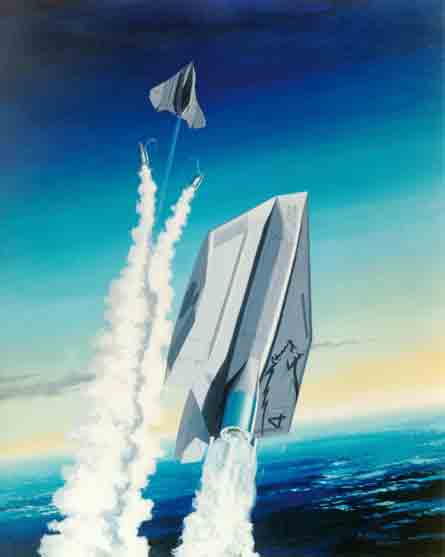DARPA reviews results of submarine-launched vehicle demonstration by Lockheed Martin's Skunk Works
Lockheed Martin's Skunk Works has completed an end-to-end demonstration of the splashdown and recovery concept envisaged for its Cormorant submarine-launched and -recovered multipurpose unmanned air vehicle (MPUAV). The US Defense Advanced Research Projects Agency (DARPA) is now reviewing the results of the early November tests to decide whether to continue the programme into the next phase.
The MPUAV is an immersible aircraft designed to be stored in the ballistic-missile launch tubes of a modified Ohio-class SSGN nuclear submarine, released from the submerged boat, and rocket-boosted out of the water to deploy its wings and start its turbofan engine.
After its mission, the UAV would return to a designated retrieval point, shut down its engine, seal the inlet and exhaust, deploy a parachute and splash down nose-first to await recovery. The submerged SSGN would despatch a remotely operated vehicle (ROV) to secure a cable to a recovery tether deployed by the buoyant aircraft, and the submarine would haul the UAV to a launch-tube saddle, where it would be docked, retracted into the missile tube and readied for its next mission.
The tests demonstrated the recovery of a full-scale test article, including splash-down, cable hook-up, hauling in and docking. The test article replicated the size, shape, mass and buoyancy of the Cormorant UAV, while a submerged static saddle rig emulated the submarine's launch and recovery mechanism. The MPUAV was dropped from a crane into the water from heights up to 40ft (8.2m) to simulate splash-down. An ROV was used to connect the recovery line and the Cormorant replica was hauled down and docked to the saddle rig using a winch. A buoyant ascent was also demonstrated.
DARPA programme manager Thomas Beutner says the end-to-end tests completed Phase 1 of the Cormorant programme, which also included a rapid engine start demonstration to prove the UAV's turbofan could be started using high-pressure air within the time limit of its rocket-boosted launch. "These tests provided risk-reduction demonstrations of the submarine-launched and -recovered MPUAV concept," he says.
If the programme proceeds, DARPA is looking at transitioning the MPUAV to the US Navy in fiscal year 2010 following a Phase 3 fight demonstration. The Cormorant would be used to provide close air support for surface ships and submarines.
|
|---|
The MPUV is rocket-boosted out of the water to deploy its wings |
Source: Flight International
























